Contents
Other years |
| Countries of the United Kingdom |
| Scotland |
| Sport |
| 1740 English cricket season |
Events from the year 1740 in Great Britain.
Other years |
| Countries of the United Kingdom |
| Scotland |
| Sport |
| 1740 English cricket season |
Events from the year 1740 in Great Britain.
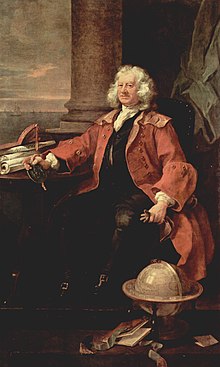

1740 (MDCCXL) was a leap year starting on Friday of the Gregorian calendar and a leap year starting on Tuesday of the Julian calendar, the 1740th year of the Common Era (CE) and Anno Domini (AD) designations, the 740th year of the 2nd millennium, the 40th year of the 18th century, and the 1st year of the 1740s decade. As of the start of 1740, the Gregorian calendar was 11 days ahead of the Julian calendar, which remained in localized use until 1923.

The War of Jenkins' Ear was a conflict lasting from 1739 to 1748 between Britain and Spain. The majority of the fighting took place in New Granada and the Caribbean Sea, with major operations largely ended by 1742. It was related to the 1740 to 1748 War of the Austrian Succession. The name was coined in 1858 by British historian Thomas Carlyle, and refers to Robert Jenkins, captain of the British brig Rebecca, whose ear was allegedly severed by Spanish coast guards while searching his ship for contraband in April 1731.

Maidstone is the largest town in Kent, England, of which it is the county town. Maidstone is historically important and lies 32 miles (51 km) east-south-east of London. The River Medway runs through the centre of the town, linking it with Rochester and the Thames Estuary. Historically, the river carried much of the town's trade as the centre of the agricultural county of Kent, which is known as the Garden of England. There is evidence of settlement in the area dating back before the Stone Age. The town, part of the borough of Maidstone, had an approximate population of 100,000 in 2019. Since World War II, the town's economy has shifted from heavy industry towards light industry and services.

George Vertue was an English engraver and antiquary, whose notebooks on British art of the first half of the 18th century are a valuable source for the period.
This article contains information about the literary events and publications of 1740.
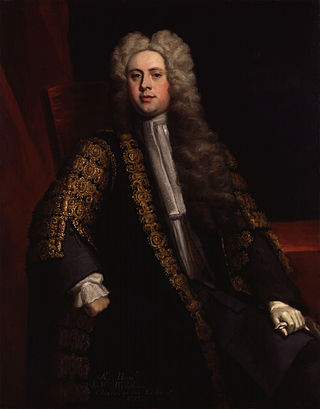
Sir William Wyndham, 3rd Baronet, of Orchard Wyndham in Somerset, was an English Tory politician who sat in the House of Commons from 1710 to 1740. He served as Secretary at War in 1712 and Chancellor of the Exchequer in 1713 during the reign of the last Stuart monarch, Queen Anne (1702–1714). He was a Jacobite leader firmly opposed to the Hanoverian succession and was leader of the Tory opposition in the House of Commons during the reign of King George I (1714–1727) and during the early years of King George II (1727–1760).

Princess Elizabeth Caroline of Great Britain was one of the children of Frederick, Prince of Wales, and Princess Augusta of Saxe-Gotha. She was a granddaughter of King George II and sister of King George III.
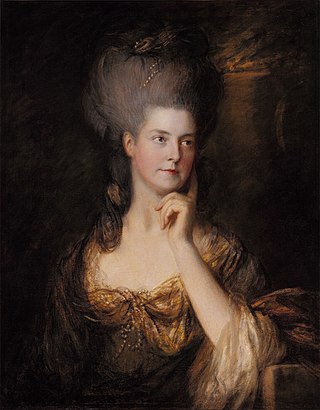
Maria, Duchess of Gloucester and Edinburgh was a member of the British royal family. She was the Countess Waldegrave from 1759 to 1766, as a result of her first marriage to James Waldegrave, 2nd Earl Waldegrave. Her second husband was Prince William Henry, Duke of Gloucester and Edinburgh, whom she married in 1766.
Events from the year 1801 in the United Kingdom. The Acts of Union 1800 came into force this year.
Events from the year 1868 in the United Kingdom.
Events from the year 1735 in Great Britain.
Events from the year 1879 in the United Kingdom.
Events from the year 1784 in Great Britain.

Catherine, Lady Walpole was the first wife of the first British prime minister Sir Robert Walpole.
Events from the year 1765 in Great Britain.
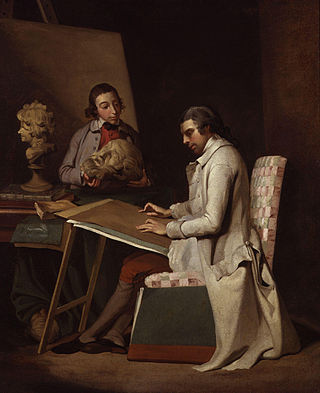
John Hamilton Mortimer was a British figure and landscape painter and printmaker, known for romantic paintings set in Italy, works depicting conversations, and works drawn in the 1770s portraying war scenes, similar to those of Salvator Rosa.
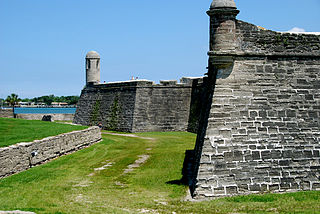
The siege of St. Augustine was a military engagement that took place during June–July 1740. It involved a British attack on the city of St. Augustine in Spanish Florida and was a part of the much larger conflict known as the War of Jenkins' Ear.

The River Len is a river in Kent, England. It rises at a spring in Bluebell Woods to the southeast of the village centre of Lenham 0.6 miles (0.97 km) from the source of the River Great Stour; both rise on the Greensand Ridge. Its length is c10 miles (16 km). It enters the River Medway at Maidstone.
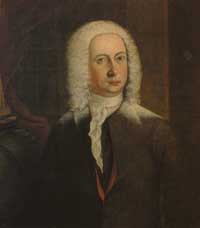
James Whatman (1702–1759), the Elder, was a paper maker, born in Kent, who made revolutionary advances to the craft in England. He is noted as the inventor of wove paper, an innovation used for high-quality art and printing. The techniques continued to be developed by his son, James Whatman the Younger (1741–1798). At a time when the craft was based in smaller paper mills, his innovations led to the large scale and widespread industrialisation of paper manufacturing.
Thomas Balston was an English first-class cricketer and barrister.